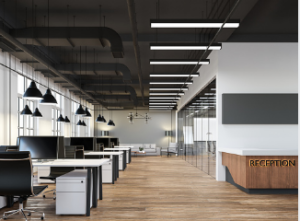Website migration can be challenging. Understanding what is involved in the process and preparing for the short-term impact on your site’s performance is essential.
A business may need to migrate its website for many reasons, including changing hosting providers, expanding to new markets, and improving its user experience. Whatever the reason, a migration will usually involve URL alterations that could affect SEO. For more information about the web migration project plan, click here.
Define Your Goals & and Objectives.
 A website migration isn’t easy, but it’s often necessary to keep a company’s digital presence healthy. It’s a complex process that can lead to problems if it isn’t properly executed.
A website migration isn’t easy, but it’s often necessary to keep a company’s digital presence healthy. It’s a complex process that can lead to problems if it isn’t properly executed.
Defining your goals and objectives is one of the most critical steps in a successful web migration. For example, a key stakeholder may want to know what impact the migration could have on search visibility, organic traffic, and marketing channels before the project starts. This will help you forecast worst-case and best-case scenarios.
Other goals you might have include completing the migration within a specific timeframe, reconciling the database, and increasing test coverage. You should also plan a content freeze to avoid publishing new pages during the migration. This will prevent potential data loss or downtime during the migration process.
Determine Your Work Scope
A website migration can be a considerable undertaking, and it’s essential to determine your work scope before beginning. This will help you stay on track and ensure you have the resources to complete the project and meet your deadlines. For more information about the web migration project plan, click here.
It’s also important to consider how a website migration will impact SEO, especially if it’s a domain name change, rebrand, or consolidation. Website migration can significantly impact organic search visibility, leading to traffic and sales losses if not handled properly.
It is essential to review the new site structure, taxonomy, and URLs to see how they will affect search engine optimization. It’s also a good idea to migrate during a low-traffic time to minimize potential issues.
Identify Your Stakeholders
Website migration can be a big project, and many ways can go wrong. It is essential to identify the key stakeholders and get their buy-in before starting work on a migration plan.
You should also set clear goals and objectives for each focus area. This includes setting KPIs for each objective, which are measurable targets that help you track your progress. Examples of KPIs for a website migration plan include things like “migration time,” “database reconciliation,” and “test coverage.”
It’s also essential to have a backup plan if anything goes wrong during or after the migration. This could be as simple as having the ability to roll back a launch or more complex. For example, you might have to re-register your domain name with Google and Bing.
Establish a Timeline
Website migration is a time-consuming project. And it’s a must to carefully plan your entire website migration to minimize hiccups during the launch process.
Migrating a website means changing its content, structure, domain name or web hosting. This could be a significant change or a small one – but either way, a website migration should be a planned and scheduled event to avoid any downtime. For more information about the web migration project plan, click here.
Start by creating a cross-department team that includes system admins, developers, designers, SEO experts and copywriters. Then, define your objectives and schedule deliverables to complete the project on time. Also, monitor your KPIs and compare them with benchmarking reports before the migration to ensure everything goes smoothly. This will help you identify any issues and fix them quickly.
Create a Checklist
Creating a checklist to follow during the migration is a good idea. This will help to ensure that all of the tasks are correctly completed. It’s also essential to identify the team members responsible for each task. This will help to prevent issues from arising.
After the website migration, you should run several tests to ensure everything is functioning as expected. It’s normal for traffic to drop during the migration, but this can be minimized by preparing ahead of time and communicating expectations clearly to stakeholders.
Finally, don’t forget to update your URLs and re-submit your Sitemap to Google and Bing. This will help ensure your new site is SEO-healthy after the migration.
 Office fitouts are not just about physical transformations; they are about creating spaces that inspire and motivate.
Office fitouts are not just about physical transformations; they are about creating spaces that inspire and motivate.